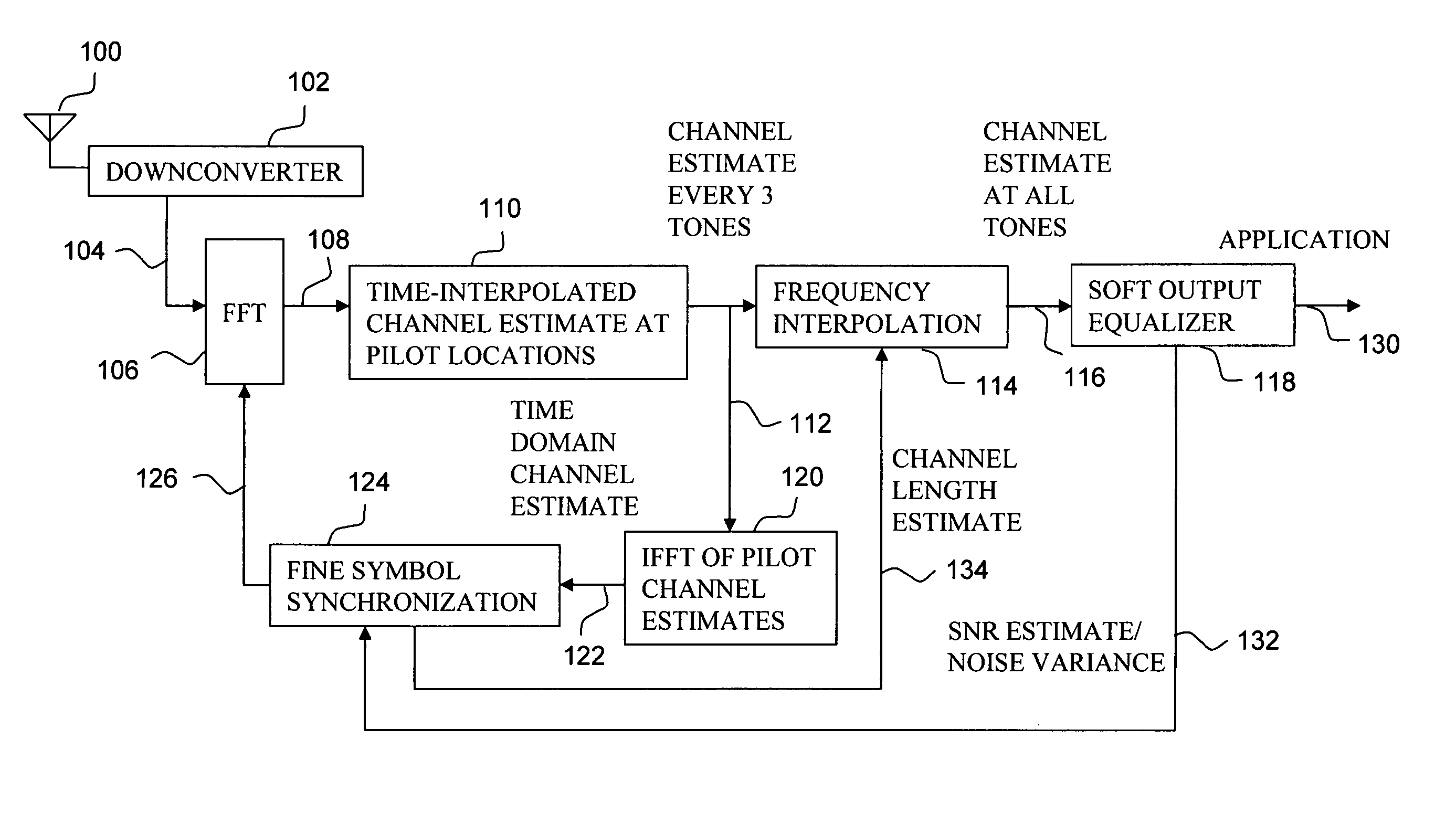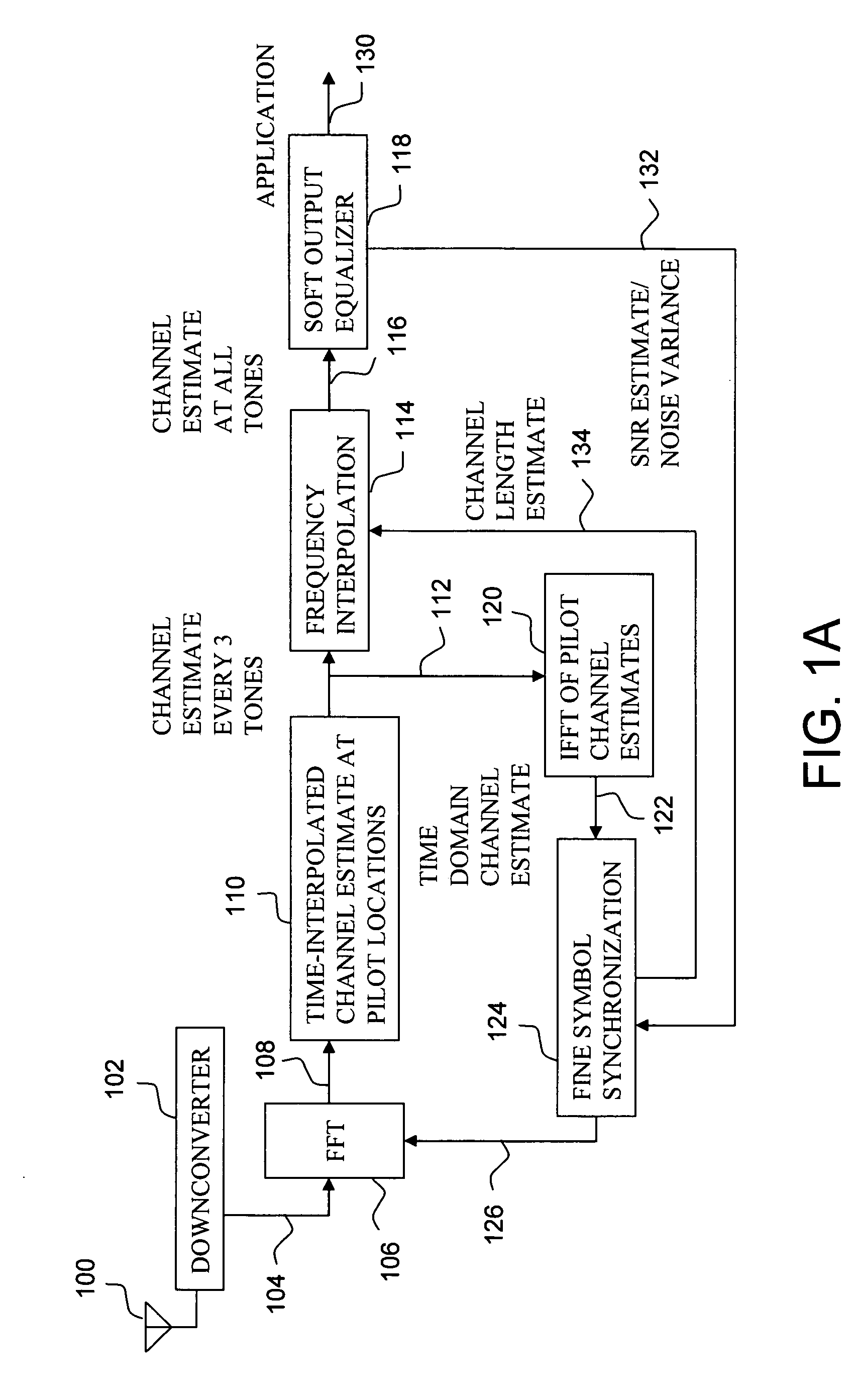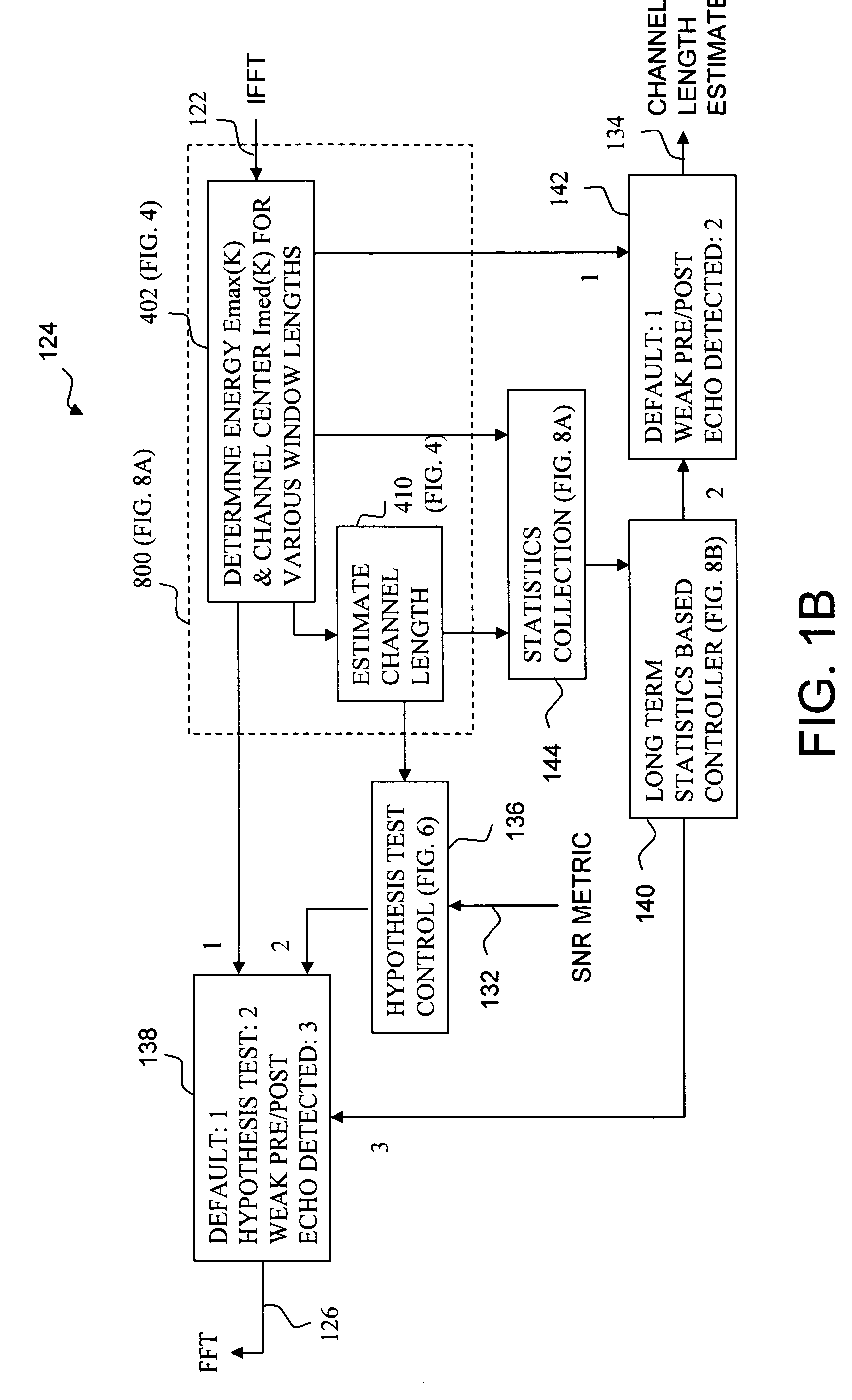Channel length estimation and accurate FFT window placement for high-mobility OFDM receivers in single frequency networks
a single-frequency network, high-mobility technology, applied in multi-frequency code systems, digital transmission, amplitude demodulation, etc., can solve problems such as the corrupted reception signal, and achieve the effect of improving channel estimation and channel length estimation
- Summary
- Abstract
- Description
- Claims
- Application Information
AI Technical Summary
Benefits of technology
Problems solved by technology
Method used
Image
Examples
Embodiment Construction
[0020] The preferred embodiments of the present invention provide improved synchronization between a wireless receiver and a remote transmitter to reduce interference for a wireless communication system. The wireless communication system preferably provides Digital Video Broadcast-Handheld (DVB-H) applications such as streaming video by Orthogonal Frequency Division Multiplex (OFDM) transmission. Data are transmitted in consecutive blocks called OFDM symbols. Each OFDM symbol includes a set of data signals, pilot signals, and a cyclic prefix. The pilot signals are known signals used for channel estimation at the receiver. The cyclic prefix is typically a copy of the last few data values. A transmitter performs an Inverse Fast Fourier Transform (IFFT) on the data, thereby producing N output values. For example, N may be 2048, 4096, of 8192 in DVB-H systems. The cyclic prefix or guard interval duration may be N / 4, N / 8, N / 16, or N / 32 values. The combined cyclic prefix and data are tran...
PUM
 Login to View More
Login to View More Abstract
Description
Claims
Application Information
 Login to View More
Login to View More - R&D
- Intellectual Property
- Life Sciences
- Materials
- Tech Scout
- Unparalleled Data Quality
- Higher Quality Content
- 60% Fewer Hallucinations
Browse by: Latest US Patents, China's latest patents, Technical Efficacy Thesaurus, Application Domain, Technology Topic, Popular Technical Reports.
© 2025 PatSnap. All rights reserved.Legal|Privacy policy|Modern Slavery Act Transparency Statement|Sitemap|About US| Contact US: help@patsnap.com



